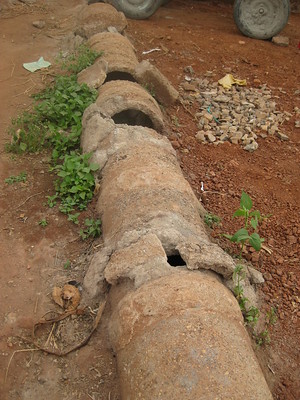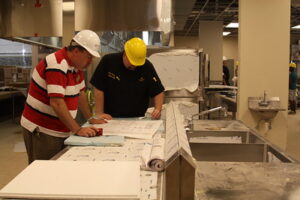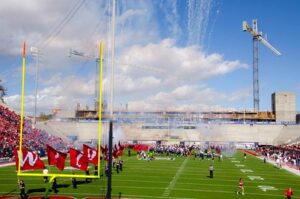I have written extensively about the impact of building neglect on the facilities at WCC. Reducing the maintenance budget is a recipe for disaster, and we are already reaping the “rewards” of this insane approach.
There are common standards for determining how much money should be spent on maintenance each year. These standards consider the square footage of the building, building design, its purpose and level of use, the infrastructure that supports the building, the age of the building, and the building’s construction techniques. Predictably, this kind of analysis results in a large maintenance budget for a building. Administrators shy away from this approach to budgeting because it rightly requires an increasing commitment of resources as a building ages.
Maintenance as a percentage of revenue
One common guide for maintenance spending is to budget for it as a percentage of revenue. Using this model, an institution should devote 1% of its revenue to maintenance activities. In Washtenaw Community College’s case, it anticipates revenue this year of $117,073,894. This standard would produce a maintenance budget of $11.71M. Currently, WCC’s maintenance budget is $300,000.
Maintenance as a function of square footage
Another common model for facilities maintenance budgeting is as a function of the square footage of a building. This approach is deficient because doesn’t recognize critical infrastructure that may be located outside of a building, like… I don’t know… the sanitary sewer system and the parking lots. Currently, WCC has about 1.2M square feet of building space. Currently, the average maintenance expenditure on commercial buildings is about $2.25 per square foot. Using this standard, WCC’s annual maintenance budget should be $2.7M.
Maintenance as a function of replacement value
Here’s another model that makes a lot of sense, but the WCC administration would never adopt. Maintenance as a percentage of replacement value is likely to generate a higher budget when we view it in relation to how much we have spent to build the campus in the first place. Based on the most recent Capital Outlay Plan, the facility’s most recent Complete Replacement Value (CRV) is $357,338,391. Using this model, the College should spend between 2%-5% of the facility’s replacement value on maintenance each year. In dollar terms, that’s between $7,146,768 and $17,866,920 annually.
The infuriating thing is that in the Capital Outlay Plan, WCC uses this model to acknowledge what it should be spending on the facilities each year. The correct level of expenditure is NOT an unknown. The WCC Administration knows what it should spend, and simply ignores its responsibility to care for the facilities.
Where is the Board of Trustees on building neglect?
WCC acknowledges it should spend $6 per square foot to maintain the facilities, but this acknowledgment never shows up in the budget. Instead, the Administration has reduced the maintenance spending on aging buildings. The average age of the buildings on WCC’s campus right now is almost 25 years. At the exact time the Administration should spend more to accommodate older building designs, older construction techniques, and less efficient mechanical systems, they have pared the maintenance budget to a mere $0.25 per square foot.
The only outcome of this approach is even more building neglect, which will raise operating and repair costs in future years. Building neglect also makes the facilities potentially more dangerous and less attractive to students, which as far as I know, WCC still needs more of.
The WCC Board of Trustees has a responsibility to monitor the actions of the Administration and protect the community from the liability and added expenses associated with wholesale building neglect. When they refuse to demand change, they endorse building neglect as a policy.
We have already seen uncontrolled raw sewage discharges into the retention ponds and the Huron River watershed from this policy of neglect. We are waiting for the bill on both replacing the sanitary sewage system on campus and the potential fines for these unregulated discharges.
And here’s a news flash: raw sewage discharges aren’t a good sales pitch for the college. Students don’t want to come to a campus where the indoor plumbing dumps out directly on the Community Park. (Nice place to eat your lunch when the weather is warm…)
The Trustees must insist on an Asset Protection policy because this administration has already demonstrated that they have no interest in maintaining the facilities voluntarily.
Photo Credit: SuSan A Secretariat




















